#queen margrethe the second of Denmark
Text
Since she will be retiring (abdicating in favor of her son Crown Prince Frederik) on Jan 14th, it seems now's a good time to share this little story:
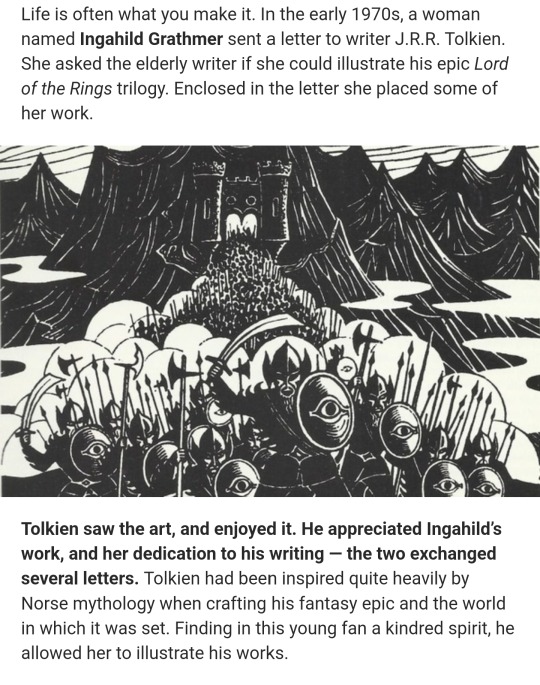

18 notes
·
View notes
Text
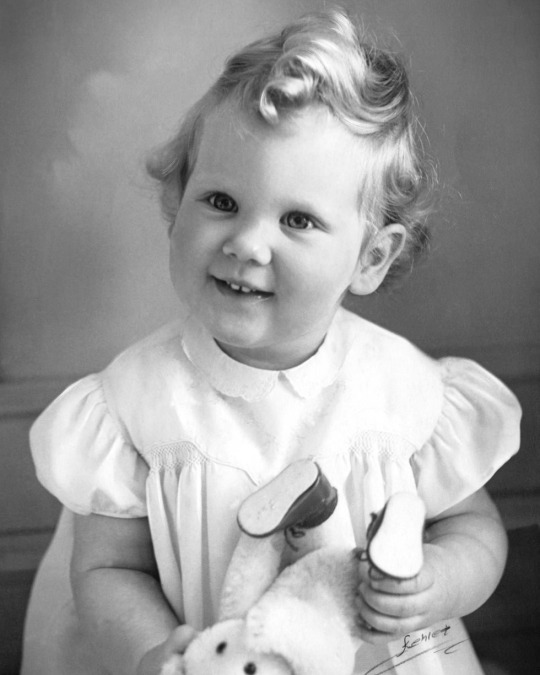

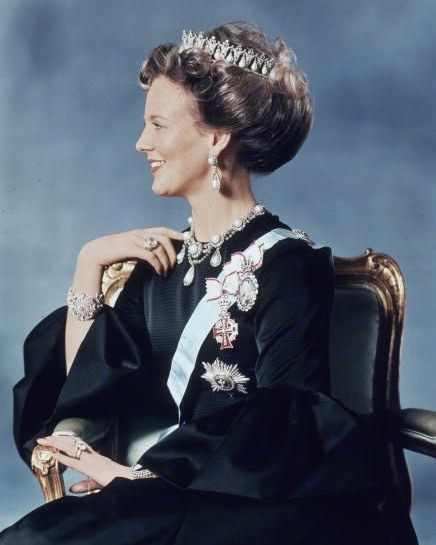
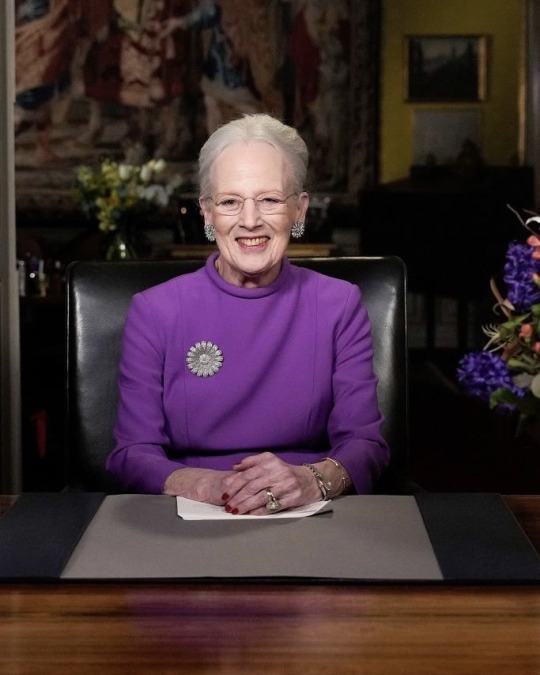
Happy 84th birthday to Queen Margrethe Il of Denmark!
Born on April 16th 1940, Margrethe Alexandrine Pórhildur Ingrid, reigned as Queen of Denmark from 14 January 1972 until her abdication on 14 January 2024. Having reigned for exactly 52 years, she was the second-longest reigning Danish monarch after Christian IV.
Margrethe is the eldest child of Frederick IX of Denmark and Ingrid of Sweden and became heir presumptive to her father in 1953, when a constitutional amendment allowed women to inherit the throne. On her accession, she became the first female monarch of Denmark since Margrethe I, ruler of the Scandinavian kingdoms in 1376-1412.
In 1967, she married Henri de Laborde de Monpezat, with whom she had two sons: Crown Prince Frederik and Prince Joachim. She also has 8 grandchildren.
In her annual live broadcast New Year's Eve address on 31 December 2023, Margrethe announced her abdication, which took place on 14 January 2024, the 52nd anniversary of her accession to the throne. She was succeeded by her elder son, Frederik, as King Frederik X.
29 notes
·
View notes
Note
What did the Prime Minister say when introducing the new king? Tusind tak fra dig hjælp. P.S. Started learning Danish last year because of the DRF, I am a slow learner so hope my sentence was correct.
Aw, good luck on learning Danish!
I couldn't find an official translation, so I translated the Danish version myself:
Today is Sunday the 14th of January 2024.
Her Majesty Queen Margrethe the Second has abdicated.
On behalf of the entire Kingdom, I want to offer Queen Margrethe my deepest and sincerest gratitude.
Thank you for carrying the legacy, for your commitment and responsibility.
Thank you for connecting us to the past and preparing us for the present.
Thank you for making an effort. And much more.
Every queen and ever king is a link in a more than thousand year old chain.
When one retires, the next is ready.
And the Crown Prince, who will now be our regent, is a King that we know.
A King that we love. A King that we trust.
As we welcome Denmark's new head of state. And wish happiness upon his life and work – and thus for Denmark – I must, in accordance with Danish state custom, thrice proclaim:
Her Majesty Queen Margrethe the Second has abdicted.
Long live His Majesty King Frederik the Tenth!
Her Majesty Queen Margrethe the Second has abdicted.
Long live His Majesty King Frederik the Tenth!
Her Majesty Queen Margrethe the Second has abdicted.
Long live His Majesty King Frederik the Tenth!
A ninefold cheer for His Majesty the King:
HURRAH HURRAH HURRAH
HURRAH HURRAH HURRAH
HURRAH HURRAH HURRAH
24 notes
·
View notes
Text

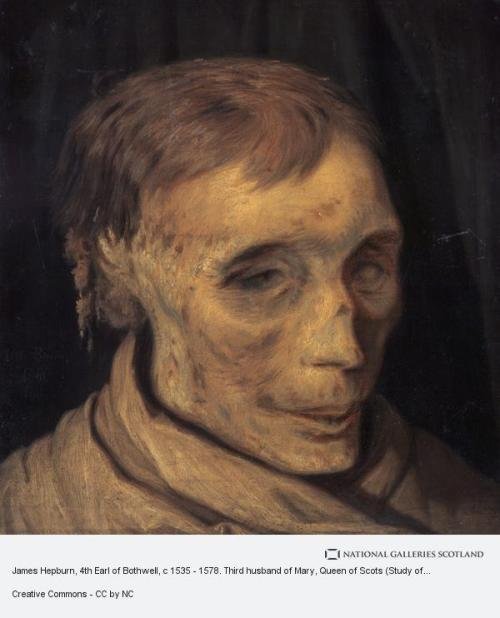

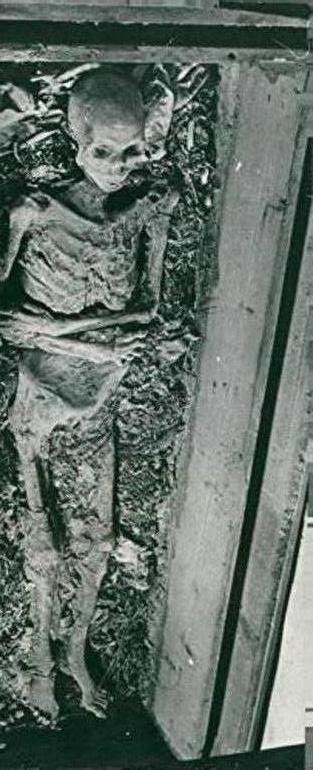

On April 14th 1578 James Hepburn, 4th Earl of Bothwell , Earl of Orkney and third husband of Mary Queen of Scots died, aged 44, tied to a post in a dungeon at, Denmark.
As I posted on Friday Bothwell fled Scotland after the surrender at Carberry Hill, Queen Mary’s last act of love for him was guaranteeing he could leave the area unharmed.
Bothwell took ship from Aberdeen to Shetland, he may have stopped off in Orkney, the only thing we know is he was denied refuge there and travelled on to Shetland.
He was pursued by Sir William Kirkcaldy of Grange and William Murray of Tullibardine who it seems were not that far behind him. They sailed into Bressay Sound near Lerwick. Four of Bothwell’s ships in the Sound set sail north to Unst where Hepburn and his cousin, the pirate, Olaf Sinclair were negotiating with German captains to hire more ships. Kirkcaldy’s flagship The Lion, chased one of Bothwell’s ships, and both ships were damaged on a submerged rock.
Bothwell sent his treasure ship to Scalloway and fought a three-hour-long sea battle off the Port of Unst where the mast of one of his ships was shot away. During the chase a storm erupted and Bothwell’s superior seamanship to come to his rescue. After transferring his men to his two remaining ships, he sailed south-east before the wind, making the 250-mile crossing in record time Although Kirkcaldy followed for sixty miles, he was out-sailed and, by his own admission, was ‘no good seaman’.
He might have thought he was off the hook again, but no, Frederick II was not sympathetic to his cause, he was at war, and was torn between his blood ties to Mary Queen of Scots and the need to show loyalty to his Protestant allies. Fortunately for him, the problem solved itself when Mary, held prisoner in England, dissolved her marriage to Bothwell, making him merely a problem to be got rid of from Frederik’s perspective, so he ordered his arrest to be used as a bargaining chip in the forlorn hope that he would be traded in return for the return of the Northern Isle!
After being brought before the Bergen magistrates, in September he was carried to Copenhagen on one of Frederick’s ships for ‘honourable confinement’ at Dragshorn Castle, the Scandinavian equivalent of the Tower Of London. I found an extract from My Heart is My Own, a biography on Mary Queen of Scots that reads
“On 14th April 1578, Bothwell died at Dragsholm. As was customary for state prisoners, his body was carried to the promontory that juts into the fjord a side of things. mile or so from the castle and buried at the parish church of Fårevejle. (…) “
There are differing versions on how he lived out his last days, one says he was actually not held in ‘honourable confinement’, but in a small dungeon chained to a post, the cell so small he was unable to stand, the second is more in the line of the ‘honourable confinement’ that he spent the last years drinking to excess with others held at the castle and gradually became more and more insane.
John Maxwell, visited Dragshorn Castle, and reported that Hepburn had latterly become overgrown with hair and filth. I take it from this he was still alive at the time!
The story doesn’t quite end there, Bothwell’s coffin was opened for the first time in 1868 and a very well-preserved body was found, which subsequently rapidly decayed and, for a period of time, until 1973, was open to public viewing under a glass lid. Then, in response to a request from the descendants of the Hepburn family, the newly-crowned Margrethe II had Bothwell buried in a zinc-lined coffin within a sarcophagus of oak, and here he remains.
Every now and then there is a story in the press about his descendents making an attempt for his body to be repatriated, I have no idea why the Danes would not allow this and for the moment he remains there. Of course with a story like this the castle is said to be haunted by the "good” Earl, where is he said to ride through the courtyard with a full horse and carriage.
The pictures are, the supposed head of Bothwell “ Study of Mummified Head” by Danish artist Otto Bache. The even more gruesome “body of James Hepburn” although the church where his supposed remains lie was known to have exhibited several bodies over the years as his, therefore, it is impossible to know if this is actually him.
There have been moves by his descendants to have his body repatriated through the years Speaking in 2010 Sir Alastair Buchan-Hepburn, Bothwell's direct descendant sought to raise funds to lobby the Scottish and Danish governments, saying "I want the Scottish culture minister to get in touch with his Danish counterpart to ask him 'would you please consider to return the body of James Hepburn, the Earl of Bothwell?'"
James Hepburn, 4th Earl of Bothwells’ remains are now kept in the crypt at the church at Faravejle, near Dragsholm Castle, as seen in the last pic.
7 notes
·
View notes
Note
Hi, im new to royalty so forgive me if its a stupid question thats been answered a million times. If i understand it correctly there is a naming tradition in Denmark with the regnal names of kings alternating between ‘Christian’ and ‘Frederik’, QMII took the place of a Christian, named her son Frederik etc. What if prince Christians first child is a girl? Its relatively new that women can inherit the throne over their younger brother so I understand theres no precedence for it. What do you think? What would happen if you get a Dutch lineage with like a million (4) queen regnants in a row, would they all be called Margrethe?
Hello :) I've had some stupid questions in my time and it's certainly not stupid haha. If people aren't aware, from 1513 until Queen Margrethe came to the throne Denmark had an unbroken pattern of alternating names: King Christian, then King Frederik, then King Christian, then King Frederik and so on. Margrethe is treated as an Honorary Christian for the sake of the pattern. There are a few things:
It wouldn't actually be uncommon to have multiple royals or multiple monarchs in a row with the same name. They find ways to differentiate. They have numerals - Queen Margrethe II, King Harald V etc. They can use nicknames or middle names - Harry's birth name was Henry, Catharina-Amalia is referred to as Amalia. They'd find a way if they wanted to.
The Christian and Frederik tradition going on so long without interruption is not that straight forward. Margrethe's father was a King Frederik but his birth name was Christian. Frederik VIII was also born Christian. So they could call a princess anything but she could still use Margrethe as Queen. Secondly, Christian IX was born Christian but was never expected to be King of Denmark, he was chosen when the previous line died out, so if he'd had a different name or they'd chosen someone else the tradition could have died in 1863. Christian VIII was also born Christian but he inherited the throne from his cousin who had no kids so if he'd had a different name it could have died in 1839. And Christian IV's original heir was also called Christian but he died childless at age 44, without taking the throne, which meant his brother Frederik became King and was able to continue the pattern. So, again, it's actually very possible the tradition was going to end as early as 1648. The pattern is old but it's not guaranteed, it never has been. It only continued this long through monarchs actively choosing that regnal name and a healthy dose of luck!
And lastly, and perhaps most importantly, calling female heirs Margrethe isn't really a tradition anyway. Denmark's only had two Queens and they were both called Margrethe. But our Margrethe was named after her British grandmother Margaret of Connaught who was Crown Princess of Sweden, not Margrethe I. And when she was born she had no rights to the throne and her parents had every reason to believe a son would follow. She was 7 when they accepted a son wasn't likely. So it really is a coincidence that the second woman to reign as monarch had the same name as the first, it couldn't have been an attempt to start a tradition as they had no reason to think she would be Queen. Continuing tradition is always voluntary but I can see why they would stick to something that's been ongoing for 500 years. But if Christian had a daughter first, there's no automatic expectation he'd call her Margrethe.
17 notes
·
View notes
Photo

By the standards of the hapless Greek monarchy, Constantine II, the last king of the Hellenes, who has died aged 82, led a comfortable life in exile after a brief and turbulent reign. Of the seven Greek monarchs of the 19th and 20th centuries, three were deposed, one assassinated, two abdicated and one died of septicaemia after being bitten by a barbary ape in the royal gardens.
The Glücksburg monarchy was German-Danish in origin, imposed on Greece in the 1830s. During prolonged wrangling after Constantine’s deposition, the Greek government refused to give him a passport until he acknowledged that he was Mr Glücksburg, whereas he insisted he was just plain Constantine. As the last of Greece’s deposed monarchs he escaped lightly. But decades of exile in London, as one thing the Greeks did not want back from Britain, were not how he would have chosen to spend his life.
In Hampstead Garden Suburb, Constantine lived in some state – apparently supported largely by donations from Greek monarchists – and visitors were expected to address him as Your Majesty. He was included in many invitations by the British royal family, to whom, like most of Europe’s monarchies, he was related. Prince Philip was his father’s first cousin, King Charles III his second cousin and Queen Elizabeth II a third cousin, and he was a godfather to Prince William. His wife was a Danish princess, the sister of Denmark’s Queen Margrethe II, and his sister Sofía became queen of Spain. Only in Greece was he unrecognised, and he was not allowed to return to live there until 2013, long after the events that had toppled him from the throne after a military coup in 1967 and resulted in the abolition of the monarchy in Greece in 1973.
In many ways, Constantine was a victim of the vicious political infighting that has characterised Greek politics and its society for much of the period since the second world war. It perhaps needed a stronger, more experienced and more resolute approach to surmount the crises of his three-year reign than the young man in his early 20s could manage. In later life he said in an interview that he might have liked to be an actor or a journalist, but his fate was to spend his life as an ex-king, harried by Greek politicians and in turn harassing them in a prolonged legal fight for compensation for his family’s lost property, eventually through the European court of human rights.
Born in Athens, Constantine was the son of the Greek crown prince, Paul, the younger brother of King George II, and his German-born wife Princess Frederica, and was taken into exile as a baby following the Italian and then Nazi invasions of the country in 1940-41. His early years were spent first in Egypt and then in South Africa, before the family returned to Greece following the referendum that restored George to the throne in 1946. George died the following year, and Paul became king.
Constantine was educated at a private high school in Athens, modelled on the same lines as the German educationist Kurt Hahn’s principles at Gordonstoun, and afterwards attended Athens University to study law. A keen sailor, Constantine was a member of Greece’s winning sailing team at the 1960 Rome Olympics – the country’s first gold medal in nearly 50 years.
He succeeded to the throne aged 23 on his father’s death in March 1964, becoming head of state in a country that had not got over the civil war between communists and the Greek government of 1946-49, and where political tensions and divisions continued to run deep. The CIA, desperate to avoid Greece falling into communist hands, was also active in Athens. Greece was a strategic pawn between the US and the Soviet Union, each anxious to pull the country into its sphere of influence in the eastern Mediterranean. At the same time, it was attempting to modernise with social and economic reforms as an associate member and applicant to join the Common Market.
The month before Constantine came to the throne, a general election had produced a centrist – moderate, leftwing – government under George Papandreou, following 11 years of rightwing government. Within a year, relations between the king and his prime minister were breaking down. Conservative army officers were alarmed by a perceived leftwards drift among the junior ranks, who were supported by Papandreou’s Harvard-educated son Andreas. When George Papandreou announced that he would take over the defence ministry himself, Constantine refused to allow him to do so, and the government resigned. In the hiatus that followed, the king attempted to appoint a government without holding an election and was accused of acting unconstitutionally.
When elections were finally called in April 1967, the likely re-election of Papandreou was forestalled by an army coup led by colonels. Constantine initially appeared to go along with the insurgents. He argued later that he had had no choice as the palace was surrounded by army tanks, but there were also persistent suggestions that he had been urged by the American embassy to do so in order to avoid another radical government. Many Greeks and civilian politicians never forgave the king for acceding to the coup, but within months he attempted a counter-coup of his own, fleeing to loyalist troops in the northern city of Kavala that December in an attempt to create a rival military support and force the junta to resign.
The operation was poorly organised and, although the air force and navy declared their support, the army and its officers rallied to the coup leaders. Support for the king melted away within 24 hours. Fearing bloodshed if it came to a military confrontation, Constantine and his family fled into exile, first in Rome and then a few years later in London.
There was no going back for the king. The junta, led by Colonel Georgios Papadopoulos, brutally consolidated their regime using censorship, mass arrests of opponents, torture and imprisonments, and were not going to reinstate Constantine after his attempted coup. When monarchist navy officers unsuccessfully attempted to overthrow the colonels in June 1973, Papadopoulos declared the country a republic, endorsed subsequently in a plebiscite widely assumed to have been rigged.
Nonetheless, when the regime fell following the Turkish invasion of Cyprus in 1974, to be succeeded by a civilian government, a further referendum was held to determine whether the king should be restored. Constantine was not allowed to return in order to campaign on his own behalf, though he was allowed to broadcast an address from London in which he apologised for his previous errors. But his maladroit interference with the civilian governments before the coup was held against him and the outcome of the vote in December 1974 was heavily in favour of a republic: by 69% to 31%.
Thereafter, for decades, Constantine was prevented from visiting Greece except briefly and on rare occasions: for his mother’s funeral in 1981 and for an attempted holiday in 1993, when he found his yacht was constantly harried by torpedo boats and aeroplanes. The following year, the Greek government revoked his citizenship and passport and seized the royal family’s property. “The law basically said that I had to go out and acquire a name. The problem is that my family originates from Denmark and the Danish royal family haven’t got a surname,” he said, adding that Glücksburg was the name of a place not a family: “I might as well call myself Mr Kensington.”
In 2000, the court of human rights found for the king in relation to the property, though it could only order compensation, not the return of his extensive estates nor the royal palace at Tatoi and awarded him only 12m euros (around £10m), rather than the 500m he had asked for: a reduction that the Greek government counted as a triumphant vindication. It nevertheless took another two years to pay the money and, when it did so, the government took it from its extraordinary natural disasters fund rather than general reserves. In retaliation, Constantine used the money to set up a charitable foundation in the name of his wife to assist Greeks suffering from natural disasters. He said: “I feel the Greek government have acted unjustly and vindictively. They treat me sometimes as if I am their enemy – I am not the enemy. I consider it the greatest insult in the world for a Greek to be told he is not a Greek.”
Generally, while expressing a wish to be allowed to live in Greece, which was granted in 2013, Constantine seemed equable about his fate and did not attempt to regain the throne. “All I want is to have my home back and to be able to travel in and out of Greece like every other Greek. I don’t have to be in Greece as head of state. I am quite happy to be there as a private citizen,” he told the Sunday Telegraph in 2000. “Forget the past, we are a republic now. Let’s get on with the future.”
Constantine is survived by his wife, Princess Anne-Marie of Denmark, whom he married in 1964; and their three sons, Pavlos, Philippos and Nikolaos, and two daughters, Alexia and Theodora.
🔔 Constantine II, former King of Greece, born 2 June 1940; died 10 January 2023
Daily inspiration. Discover more photos at http://justforbooks.tumblr.com
44 notes
·
View notes
Text
Just a couple of housekeeping notes.
Tonight there will be a state banquet Bellevue Palace and I expect the dress code to be black tie and tiaras. There will also be a reception at the British Embassy on Friday that might have tiaras. In recent years Queen Margrethe II of Denmark and Queen Silvia of Sweden have worn tiaras for the return event during state visits to Germany but Queen Maxima of the Netherlands did not. I'm not sure what the dress code will be this time around because Germany seems to be going all out (the fighter jet escort was nice touch) but if I had to guess I would say that the Brits wouldn't want to do a second night of tiaras.
Then yesterday The Telegraph publish an article about the guest list for the coronation. It is not the official guest list, just guess work by the reporter of who they expect to be invited and not even very good guess work at that. The article contains several mistakes like saying that foreign royals haven't been invited to past coronations, including Tom Barker Bowles' estranged wife but not Laura Lopes' husband, and leaving out Princess Alexandra's descendants entirely. There have been a bunch of similar articles recently so I don't know why this one has gained so much traction but it's being picked up as fact on social media and even other news organizations. Many of the people on the list probably will attend the coronation but not all of them. I'm keeping a running list of confirmations here. So far Japan and Monaco have informally said who is going but we still don't have anything official. There's also a lot of articles about President Biden snubbing the royal family by refusing to attend when he was probably never going to go in the first place because historically American presidents do not attend British coronations. It has nothing to do with anybody's personal feelings about anybody else, it's just the way it is.
I don't know if the stories are getting more...intense because the coronation is getting closer or if they are always this dramatic and full of speculation but I just never paid attention to them because tiaras weren't involved. It's probably the latter. I really wish they would put out some concrete information like the dress code and guest list so that we can get to the fun part of predicting tiaras. You can find all of my posts about the coronation here.
36 notes
·
View notes
Text
🇩🇰 Queen Margrethe II of Denmark
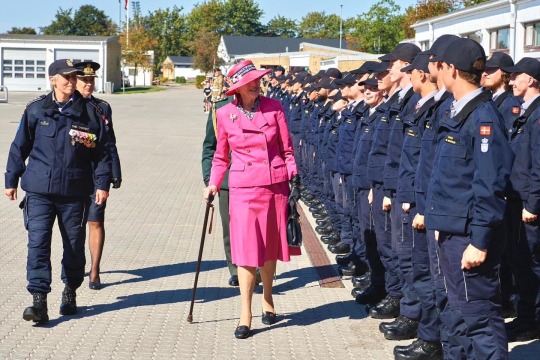
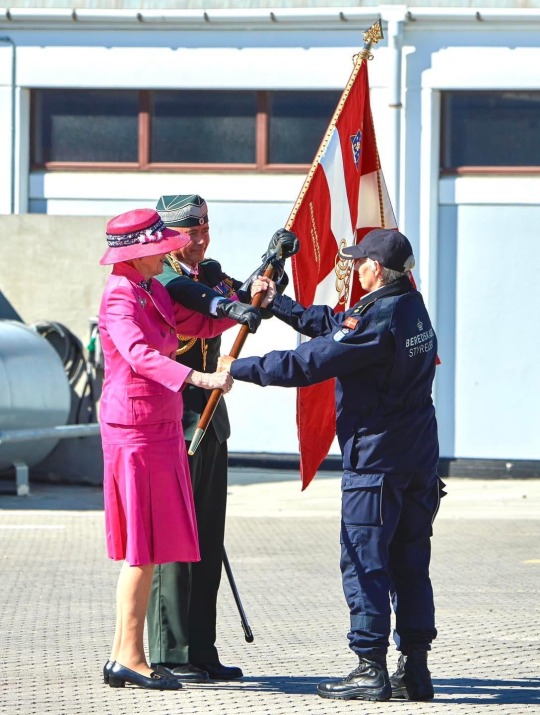

Friday, 8 September 2023
The Emergency Management Sjælland received its first royally inaugurated flag by Her Majesty the Queen today. The unit in Næstved is the second in a row of the Emergency Board's five operational departments, which at this time are awarded royally inaugurated tabs. At the inauguration of the flag, the Queen gave a short speech and struck traditionally a symbolic nail in the flag, after which the flag was handed over to the Emergency Management Zealand.
9 notes
·
View notes
Text



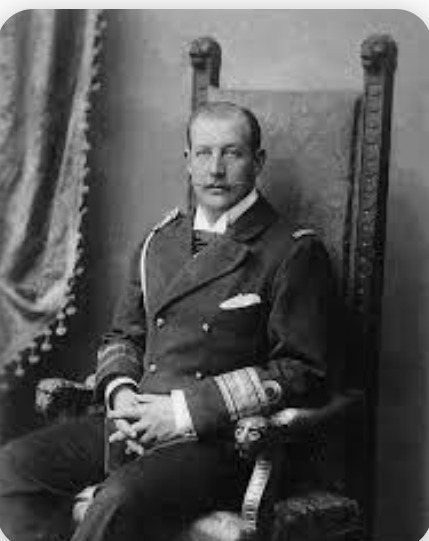

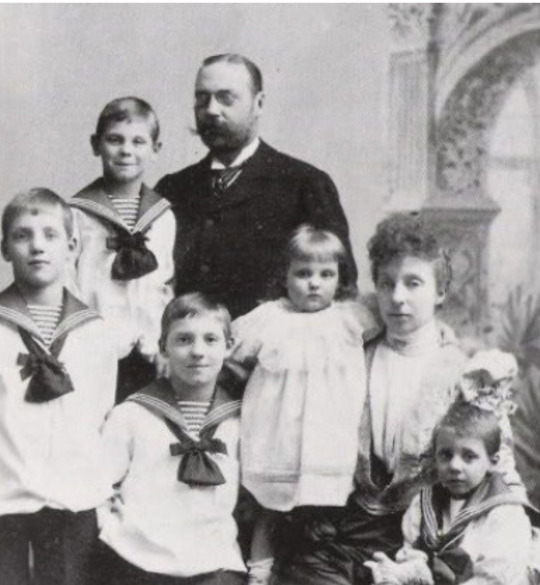


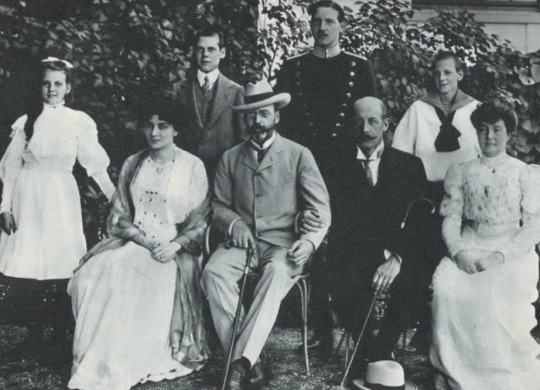

Photos: 1. Prince Waldemar of Greece; 2. Marie de Orleans, wife of Prince Waldemar; 3. Marie Bonaparte, wife of Prince George of Greece and Denmark; 4. Prince George of Greece and Denmark; 5. Prince and Princess George of Greece and Denmark and their children Prince Peter of Greece and Denmark and Princess Eugenie of Greece and Denmark; 6. Prince and Princess Waldemar of Greece with their children: Prince Aage Count of Rosenborg, Prince Axel of Denmark, Prince Erik Count of Rosenborg, Prince Vigo Count of Rosenborg, Princess Margrethe of Denmark. 7 and 8: Prince Waldemar of Greece and Prince George of Greece and Denmark; 9: Sitting: Marie Bonaparte, Prince Waldemar, Prince George, and Marie de Orleans surrounded by some of their children; 10. Prince Waldemar and Prince George
Sometimes, the love story is where you least imagine it...
Prince Waldemar of Denmark (1858 -1939) and Prince George of Greece and Denmark (1869 - 1957)
Prince Waldemar of Denmark was the youngest son of King Christian IX and Queen Louise of Hesse-Kessel. Waldemar entered the naval college as a young man in 1879. He was passionate about the navy and had a lifelong naval career; he was Vice Admiral and Admiral of the Danish Fleet. He married Princess Marie of Orleans, a granddaughter of King Louis Phillipe of France; they had four sons and one daughter and remained married until Marie's untimely death. Marie was a very intelligent and unconventional woman, and her life needs to be told at greater length.
Prince George of Greece and Denmark was the second child of George I of Greece and his wife, Grand Duchess Olga Konstantinovna (the Queen of the Hellenes); Prince Waldemar was George I's youngest brother. Therefore, Waldemar was George of Greece and Denmark's uncle. When George I and his wife decided to enroll their son in the Naval college, they took George to live with Waldemar, an admiral in the Danish fleet. George developed a great attachment for his uncle, which continued until Waldemar's death. (Prince George of Greece and Denmark was the cousin who went on Tsarevich Nicholas' European tour and ran to his rescue when Nicholas was attacked in the streets of Japan.)
George of Greece and Denmark married Marie Bonaparte, a very unconventional, wealthy woman who at one point was a disciple of Sigmund Freud and who became a psychotherapist. They had two children and remained married until George's death. She is another woman who deserves a book to herself.
When George married, Waldemar came along on his honeymoon. George would often return to his uncle’s palace for visits. At the end of these visits, George would weep while Waldemar would grow ill, both dreading the pending separation from each other. To their own credit, both French Maries respected the oddly close relationship between uncle and nephew.
Waldemar and George flawlessly fulfilled their military and dynastic duties to their countries. Their wives learned to cope with the unusual situation. They were always well-loved by their extensive families and included in all activities of their many European royal relatives.
George of Greece died at eighty-eight, surviving Waldemar by 18 years. When Waldemar died he had been devastated and found great comfort in his wife; the couple's last years together were their best. George was buried at the Greek Royal burial grounds at Tatoi. He requested to be buried with his wedding ring, a lock of hair from Valdemar, a photo of Valdemar, and earth from Valdemar’s palace. His widow honored this request.(gcl)
Were Valdemar and George more than just nephew and uncle? Perhaps. Were they involved in a strong and loving relationship? Undoubtedly.
Sources:
Lea. (2021, October 29). An odd royal relationship. Medium. https://worldroyals.medium.com/an-odd-royal-relationship-6a405ca16320#:~:text=George%20felt%20abandoned%20by%20his,in%20love%20with%20his%20uncle.&text=When%20George%20reached%20adulthood%2C%20he,%2C%20Catholic%20princess%2C%20Marie%20Bonaparte.
#European history#Danish history#Greek history#Prince Valdemar of Denmark#Prince George of Greece and Denmark#Marie Bonaparte#Marie of Orleans
17 notes
·
View notes
Text


Trond Norén Isaksen: As expected, Princess Ingrid Alexandra wears her pearl tiara to her second tiara appearance at Prince Christian of Denmark’s 18th birthday banquet at Christiansborg Palace today. The tiara originally belonged to her great-great-grandmother, Princess Ingeborg of Sweden, from whom it passed by inheritance to Princess Ragnhild. The children of Princess Ragnhild very generously presented it to Princess Ingrid Alexandra on her 18th birthday last year.
The Princess also wears a diamond bracelet that has belonged to Crown Princess Märtha and Princess Ragnhild, which reverted to the King on Princess Ragnhild’s death. The bracelet was an 18th birthday present from the King and Queen.
She also wears, for the first time, a pair of diamond and pearl earrings that were also a birthday present from the King and Queen. The earrings, which were also worn by Princess Ragnhild, originally had sapphires instead of pearls in the centre and were a wedding present to Crown Princess Märtha from her aunt, Princess Thyra of Denmark.
According to the research I present in my new book «Ingrid Alexandras arv - Kongefamiliens tiaraer og kvinnene som har båret dem - En historie om krig, kjærlighet, makt og prakt gjennom 250 år», it appears that Princess Thyra inherited them from her mother, Queen Louise of Denmark, who had inherited them from her grandmother, Queen Josephine of Norway and of Sweden. In other words, Princess Ingrid Alexandra is the eighth geneation to wear these earrings.
On the internet, the tiara worn by Princess Ingrid Alexandra to Prince Christian of Denmark’s 18th birthday banquet tonight has acquired the name «the Boucheron pearl circle tiara», despite the fact that it contains no circles nor is made by Boucheron. It was Princess Astrid who claimed that her grandfather, Prince Carl of Sweden and of Norway, purchased it for his wife Ingeborg when visiting the World Exhibition in Paris in 1900. However, as I show in my new book «Ingrid Alexandras arv - Kongefamiliens tiaraer og kvinnene som har båret dem - En historie om krig, kjærlighet, makt og prakt gjennom 250 år», it was not one of the tiaras exhibited by Boucheron at the 1900 World Exhibition, nor was it part of Boucheron’s stock nor are there any recorded orders or purchases by Prince Carl or Princess Ingeborg. It does, however, appear to be correct that it is a Parisian work.
Princess Ingrid Alexandra is the sixth woman to wear this tiara, after Princess Ingeborg of Sweden, Princess Margaretha of Denmark, Crown Princess Märtha, Princess Margrethe of Bourbon-Parma and Princess Ragnhild. Those of you who understand Norwegian can read about them all - and the tiara itself - in «Ingrid Alexandras arv».
📸: Screenshots from DR
7 notes
·
View notes
Note
For those getting agitated about BRF representation at King Constantine’s funeral, it looks like representation has been decided on the basis of kinship rather than status.
Anne is there as Charles’ representative but also in some way to represent her father who was a Prince of Greece and Denmark and Constantine’s great uncle. Lady Gabriella is there as William’s representative but also to represent the Kent branch of the family who are descended from Philip’s first cousin (and Constantine’s great aunt) Princess Marina of Greece and Denmark (I suspect the older Kents couldn’t make the journey).
The familial ties between the Danish royals (Queen Margrethe was Constantine’s sister in law), the Spanish royals (Queen Sofia was Constantine’s sister) and the Greek royal family are much closer. And although the British royals and the Greek royals had very close familial and personal ties when the Greeks were living in London (the Greeks were always invited to everything) Charles probably feels justified in sending second tier representation because Constantine was a deposed monarch. It would probably be different if he had been a reigning sovereign.
Thank you for this educated explanation.
29 notes
·
View notes
Note
This is some ~drama~ but apparently the Crown Prince of Denmark may or may not have had an affair with a Mexican heiress a few months ago (and rumor has it that it's not the first time, just the first time he was really caught) and I've seen someone who is a royal expert speculate that part of abdicating now may be her trying to really save their marriage and avoid another scandal. They've had a few scandals over the years- the second son got divorced from his first wife who was very popular, the Queen's (now-deceased) husband threw temper tantrums because she outranked him and he wasn't king and he refused to be buried with her, things like that. The thought is maybe if Mary gets to be queen NOW she won't leave, or that it was a demand that she made (if we get the crown then I won't leave, if we don't then I will). I personally don't think that theory holds up, I think that it will come out that Margrethe's health is not good. But it is very interesting.
the danish royal drama is so bonkers
3 notes
·
View notes
Text

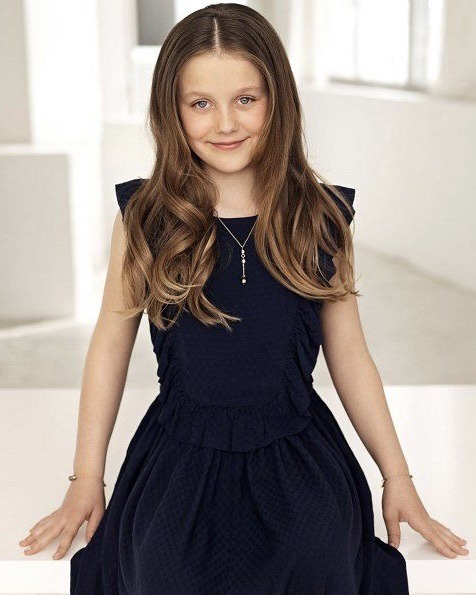


Happy 17th birthday to Princess Isabella of Denmark, Countess of Monpezat!
Born on April 21st 2007, Isabella Henrietta Ingrid Margrethe is the second child and elder daughter of King Frederik and Queen Mary of Denmark. Isabella is currently second in the line of succession to the Danish throne.
She was christened at the Royal Chapel of Fredensborg Palace on July 1st 2007, and her godparents include Princess Alexia of Greece and Denmark and Queen Mathilde of Belgium.
19 notes
·
View notes
Text

☼☾ ( milly alcock , 27 , she/them , cis female , denmark 5 ) - have you seen ISABELLA SØRENSEN? we’ve heard through the grapevine that they’re BLITHE but also OBSTINATE. when you think of them , you think of THE ETERNAL GLARE OF SUNLIGHT AGAINST SKIN , A SOILED DRESS AFTER HORSEBACK RIDING , AND LECTURES ENTERING ONE EAR AND OUT THE OTHER .
basics ;
full name : isabella margrethe sørensen .
also known as : bell , bella .
age : twenty - seven .
date of birth : february 5th , 1772 .
place of birth : charlottenlund palace , copenhagen , denmark .
title/s : princess of denmark .
gender + pronouns : cis female + they or she .
orientation : bisexual biromantic .
familial + background ;
father : king sørensen of denmark .
mother : queen sørensen of denmark .
siblings : two older siblings .
other familial relations : tba .
spoken languages : danish , english , dutch .
skills : archery , ( secretly ) trained in swordsmanship , equestrian .
positives : charming , ambitious , daring , loyal , resourceful .
negatives : dishonest , arrogant , impatient , argumentative , manipulative .
history ;
an ebullient babe marks the end of the line of heirs in denmark royalty , however , isabella's birth was far from a downcast event . a welcomed addition , particularly doted on as the youngest child , she was to be a promising diplomat to wed to another royal family , solidifying alliances as expected — and yet , she came into the world as a formidable force ; screaming and kicking , her wild disposition unfolds .
though despite being primed with the best education and etiquette classes , her rebellious streak began at a young age , fascinated by knighthood and combat . she often missed lessons in favor of learning archery , horseback riding , or simply causing havoc within and beyond castle grounds . her parents have been adamant at ceasing behaviors unbecoming of a princess to the extent of keeping her in the study with her tutor , but who would she be if not an ingenuous lady sleuthing for an escape ?
it's no secret isabella adored her life in denmark , even keeping her quarrels with her parents as fond memories . despite their apparent disapproval of her pursuits , being adept at persuading eventually led to her liberality . the longer they try to diminish her defiant tendencies , the harder she was to contain , and eventually they let her be .
present day ;
for the most part , isabella would attest adoration for france . beyond her family's alliance with the country , it is an unexplored territory for her which hath been occupying her hours the second she has arrived . she would claim it merely as her natural lust for adventure , and although it is partly true , the nagging thoughts of her responsibilities for her family poses it as a form of distraction .
the weight of the broken relationship between her family and the hollands never profoundly dawned onto her until they had to travel to france . isabella could never hate their sibling for the broken betrothal , but it did cause an overwhelmingly unfamiliar sentiment . she never did well with imposed rules as a princess , much more with the sudden pressure to regain a kingdom's trust through marriage .
connections ;
a list of wanted and established connections can be found here .
1 note
·
View note
Note
Hello duchess! I’m new to royal watch and I just found out that queen Margareth of Denmark sister is also a queen! Is royals marrying other royals common nowadays or do you think we won’t see royals marrying royals for a long time now?
My name's Jessica :) It is not as common as it used to be. Most of the inter-royal marriages are amongst those who are over 60 or they're deposed royals whose titles don't mean anything (you regularly see the pretender to some tiny German throne marrying the pretender to a throne of an Eastern European nation that doesn't exist anymore etc). Some examples (not an exhaustive list before people start with the THIS PERSON IS ANOTHER EXAMPLE nonsense):
Anne Marie is Queen Margrethe of Denmark's sister and married King Constantine of Greece.
Constantine's sister Sofia married King Juan Carlos of Spain
Princess Caroline of Monaco is still legally married to Prince Ernst August of Hanover (they live apart).
Princess Haya of Jordan - half sister of the King of Jordan - recently divorced Sheih Mohammed bin Rashid Al Maktoum who is the Ruler of Dubai
Princess Margaretha is the sister of Grand Duke Henri of Luxembourg and is married to the brother of Prince Hans-Adam of Liechtenstein
Lots of royals married into German or Austrian houses including Princess Birgitta who is the sister of the King of Sweden, Princess Astrid who is the sister of the King of Belgium, Margrethe and Sofia's other sister Princess Benedikte, Grand Duke Henri of Luxembourg's other sister Marie-Astrid etc, Prince Alois of Liechtenstein who is the heir and married a Bavarian royal.
It's not the case that royals all got some sort of memo saying they couldn't marry each other any more. It was just a natural thing. They no longer had to marry each other because countries didn't forge political alliances that way anymore. They had all been fighting each other during the wars so it was safer to marry someone from your own country. And then over time they started to go to ordinary schools or go to university with normal people or go clubbing and societal attitudes shifted and so they met different kinds of people than their ancestors would have met. So I don't think for a second that William and Kate or Victoria and Daniel are whispering into their kids' ears at night trying to convince them not to marry a royal, but whereas their ancestors might have had a pool of 10 eligible candidates to draw from because they only went to debutante balls and hunting trips with other royals, now they have access to essentially an unlimited number of people and so the probability has dropped that it will be another member of this comparatively small social class
18 notes
·
View notes
Text
who: royal degrees of separation
The imperial, royal, princely and noble families of Europe have been intermarrying for thousands of years. This practice continues to this day, though not as frequently as in times past.
Karolina Augusta I of Mecklenburg is related to all current reigning and most non-reigning houses in Europe. Due to continual intermarriage, she is related to several families through various bloodlines. The lineage connecting her to these houses will be documented here. This is not an exhaustive list.
The closest relation is listed first, followed by any other notable shared ancestors.
REIGNING HOUSES OF EUROPE
Belgium
Karolina Augusta I and Philippe of the Belgians are fourth cousins as descendants of King Christian IX of Denmark and his wife Louise of Hesse-Kassel.
Karolina Augusta and Elisabeth, Duchess of Brabant are fourth cousins once removed.
Karolina Augusta and Philippe are also descendants of Maximilian I Joseph of Bavaria and his second wife Caroline of Baden.
Denmark
Karolina Augusta I and Margrethe II are second cousins once removed as descendants of Friedrich Franz III of Mecklenburg-Schwerin and his wife Grand Duchess Anastasia Mikhailovna of Russia.
Karolina Augusta and Crown Prince Frederik are third cousins.
Karolina Augusta and Margrethe are also descendants of Queen Victoria of the United Kingdom, and of King Christian IX of Denmark.
Liechtenstein
Karolina Augusta I and Hans-Adam II are fourth cousins twice removed as descendants of Maximilian I Joseph of Bavaria and his second wife Caroline of Baden.
Karolina Augusta and Hereditary Prince Alois are fifth cousins once removed.
Luxembourg
Karolina Augusta I and Henri of Luxembourg are fourth cousins as descendants of King Christian IX of Denmark and his wife Louise of Hesse-Kassel.
Karolina Augusta and Hereditary Grand Duke Guillaume are fourth cousins once removed.
Karolina Augusta and Henri are also descendants of Maximilian I Joseph of Bavaria and his wife Caroline of Baden.
Monaco
Karolina Augusta I and Albert II are fifth cousins as descendants of Florestan I of Monaco and his wife Maria Caroline Gibert de Lametz.
Karolina Augusta and Hereditary Prince Jacques are fifth cousins once removed.
The Netherlands
Karolina Augusta I and Willem-Alexander are third cousins once removed as descendants of Friedrich Franz II of Mecklenburg-Schwerin and his third wife Marie of Schwarzburg-Rudolstadt.
Karolina Augusta and Catharina-Amalia, Princess of Orange, are fourth cousins.
Karolina Augusta and Willem-Alexander are also descendants of George Victor, Prince of Waldeck and Pyrmont and his first wife Princess Helene of Nassau.
Norway
Karolina Augusta I and Harald V of Norway are third cousins once removed as descendants of King Christian IX of Denmark and his wife Louise of Hesse-Kassel.
Karolina August and Crown Prince Haakon are fourth cousins.
Karolina Augusta and Harald are also descendants of Queen Victoria of the United Kingdom and her husband Albert of Saxe-Coburg and Gotha.
Spain
Karolina Augusta I and Felipe VI of Spain are third cousins as descendants of Ernst August, Crown Prince of Hanover and his wife Thyra of Denmark.
Karolina Augusta and Leonor, Princess of Asturias are third cousins once removed.
Karolina Augusta and Felipe are also descendants of Queen Victoria of the United Kingdom and her husband Albert of Saxe-Coburg and Gotha.
Sweden
Karolina Augusta I and Carl XVI Gustaf of Sweden are third cousins twice removed as descendants of Queen Victoria of the United Kingdom and her husband Albert of Saxe-Coburg and Gotha.
Karolina Augusta and Crown Princess Victoria are fourth cousins once removed.
Karolina Augusta and Carl XVI Gustaf are also descendants of George Victor, Prince of Waldeck and Pyrmont and his first wife Princess Helene of Nassau.
The United Kingdom
Karolina Augusta I and Elizabeth II of the United Kingdom are third cousins once removed as descendants of King Christian IX of Denmark and his wife Louise of Hesse-Kassel.
Karolina Augusta I and Prince Philip, Duke of Edinburgh are second cousins twice removed as descendants of King Christian IX of Denmark and his wife Louise of Hesse-Kassel.
Karolina Augusta I and Charles, Prince of Wales are third cousins once removed through his father’s descent of King Christian IX of Denmark and his wife Louise of Hesse-Kassel.
Karolina Augusta is fourth cousins to the grandchildren of Prince Philip, Duke of Edinburgh.
Karolina Augusta and Elizabeth, and her husband, are also descendants of Queen Victoria of the United Kingdom and her husband Albert of Saxe-Coburg and Gotha.

NON-REIGNING HOUSES OF EUROPE
Austria-Hungary
Karolina Augusta I and Karl von Habsburg are fourth cousins once removed as descendants of King John of Saxony and his wife Amalie Auguste of Bavaria.
Karolina Augusta and Ferdinand Zvonimir are fifth cousins.
Karolina Augusta and Karl are also descendants of Ernst I, Prince of Hohenlohe-Langenburg and his wife Princess Feodora of Leiningen.
Baden (German Empire)
Karolina Augusta I and Max, Margrave of Baden second cousins once removed as descendants of Ernst August, Crown Prince of Hanover and his wife Thyra of Denmark.
Karolina Augusta I and Hereditary Prince Bernhard are third cousins.
Karolina Augusta I and Max are also descendants of Queen Victoria of the United Kingdom and her husband Albert of Saxe-Coburg and Gotha.
Bulgaria
Karolina Augusta I and Simeon II of Bulgaria are fourth cousins once removed as descendants of King John of Saxony and his wife Amalie Auguste of Bavaria.
Karolina Augusta and Boris, Prince of Turnovo are fifth cousins once removed.
Karolina Augusta and Simeon are also descendants of Francis, Duke of Saxe-Coburg-Saalfeld and his second wife Countess Augusta Reuss of Ebersdorf.
Greece
Karolina Augusta I and Constantine II of Greece are second cousins once removed as descendants of Ernst August, Crown Prince of Hanover and his wife Thyra of Denmark.
Karolina Augusta and Crown Prince Pavlos are third cousins.
Karolina Augusta and Constantine are also descendants of King Christian IX of Denmark, and of Queen Victoria of the United Kingdom.
Karolina Augusta and Crown Prince Pavlos are also descendants of Friedrich Franz III of Mecklenburg-Schwerin and his wife Grand Duchess Anastasia Mikhailovna of Russia.
Hannover (German Empire)
Karolina Augusta I and Ernst August V, Prince of Hannover are second cousins once removed as descendants of Ernst August, Crown Prince of Hannover and his wife Princess Thyra of Denmark.
Karolina Augusta and Ernst August, Hereditary Prince of Hannover are third cousins.
Karolina Augusta and Ernst August are also descendants of Queen Victoria of the United Kingdom and her husband Albert of Saxe-Coburg and Gotha.
Hesse (German Empire)
Karolina Augusta I and Donatus, Landgrave of Hesse are fourth cousins once removed as descendants of Queen Victoria of the United Kingdom and her husband Albert of Saxe-Coburg and Gotha.
Karolina Augusta I and Moritz, Hereditary Prince of Hesse are fifth cousins.
Hohenlohe-Langenburg (German Empire)
Karolina Augusta I and Philipp, Prince of Hohenlohe-Langenburg are third cousins once removed as descendants of Alfred, Duke of Saxe-Coburg and Gotha and his wife Grand Duchess Maria Alexandrovna of Russia.
Karolina Augusta and Hereditary Prince Max Leopold are fourth cousins.
Hohenzollern (German Empire)
Karolina Augusta I and Karl Friedrich, Prince of Hohenzollern are first cousins once removed as descendants of Karl, 6th Prince of Leiningen and his wife Grand Duchess Maria Kirillovna of Russia.
Karolina Augusta and Hereditary Prince Alexander are second cousins.
Leiningen (German Empire)
Karolina Augusta I is a niece of Andreas, 8th Prince of Leiningen.
Karolina Augusta I and Hereditary Prince Ferdinand are first cousins.
Mecklenburg-Strelitz (German Empire)
Karolina Augusta I and Borwin, Duke of Mecklenburg-Strelitz are fourth cousins once removed as descendants of John of Saxony and his wife Princess Amalia of Bavaria.
Karolina Augusta I and Hereditary Duke Alexander are fifth cousins.
Karolina Augusta I and Borwin, Duke of Mecklenburg-Strelitz’s most recent patrilineal ancestor is Adolf Friedrich I, Duke of Mecklenburg, who died in 1658.
Oldenburg (German Empire)
Karolina Augusta I and Christian, Duke of Oldenburg are first cousins once removed as descendants of Nikolaus, Hereditary Duke of Oldenburg and his wife Helen of Waldeck and Pyrmont.
Karolina Augusta I and Hereditary Duke Alexander are second cousins.
Portugal
Karolina Augusta I and Duarte Pio, Duke of Braganza are fourth cousins twice removed as descendants of Karl Ludwig, Prince of Hohenlohe-Langenburg and his wife Countess Amalie Henriette of Solms-Baruth.
Karolina Augusta and Afonso, Prince of Beira are fifth cousins once removed.
Prussia (German Empire)
Karolina Augusta I and Georg Friedrich, Prince of Prussia are second cousins once removed as descendants of Kirill Vladimirovich, Grand Duke of Russia and his wife Princess Victoria Melita of Saxe-Coburg and Gotha.
Karolina Augusta and Prince Carl Friedrich are third cousins.
Karolina Augusta and Georg Friedrich are also descendants of Friedrich Franz III, Grand Duke of Mecklenburg-Schwerin and his wife Grand Duchess Anastasia Mikhailovna of Russia.
Romania
Karolina Augusta I and King Michael I of Romania are second cousins twice removed as descendants of Alfred, Duke of Saxe-Coburg and Gotha and his wife Grand Duchess Maria Alexandrovna of Russia.
Karolina Augusta and Crown Princess Margareta are third cousins once removed.
Karolina Augusta and Michael are also descendants of King Christian IX of Denmark and his wife Louise of Hesse-Kassel.
Russia (Disputed)
Karolina Augusta I and Maria Vladimirovna are first cousins twice removed as descendants of Kirill Vladimirovich, Grand Duke of Russia and his wife Princess Victoria Melita of Saxe-Coburg and Gotha.
Karolina Augusta and Grand Duke George Mikhailovich are second cousins once removed.
Saxe-Coburg and Gotha (German Empire)
Karolina Augusta I and Andreas, Prince of Saxe-Coburg and Gotha are third cousins twice removed descendants of Queen Victoria of the United Kingdom and her husband Albert of Saxe-Coburg and Gotha.
Karolina Augusta and Hubertus, Hereditary Prince of Saxe-Coburg and Gotha are fourth cousins once removed.
Schleswig-Holstein (German Empire)
Karolina Augusta I and Christoph, Prince of Schleswig-Holstein are second cousins once removed as descendants of Friedrich August II, Grand Duke of Oldenburg and his second wife Duchess Elisabeth Alexandrine of Mecklenburg-Schwerin.
Karolina Augusta and Hereditary Prince Friedrich Ferdinand are third cousins.
Karolina Augusta and Christoph are also descendants of Alfred, Duke of Saxe-Coburg and Gotha and his wife Grand Duchess Maria Alexandrovna of Russia.
Waldeck and Pyrmont (German Empire)
Karolina Augusta I and Wittekind, Prince of Waldeck and Pyrmont are first cousins twice removed as descendants of Friedrich August II, Grand Duke of Oldenburg and his second wife Duchess Elisabeth Alexandrine of Mecklenburg-Schwerin.
Karolina Augusta and Hereditary Prince Carl-Anton are second cousins once removed.
Wied (German Empire)
Karolina Augusta I and Maximilian, 9th Prince of Wied are third cousins as descendants of Friedrich August II, Grand Duke of Oldenburg and his second wife Duchess Elisabeth Alexandrine of Mecklenburg-Schwerin.
Yugoslavia/Serbia
Karolina Augusta I and Alexander, Crown Prince of Yugoslavia are third cousins once removed as descendants of Alfred, Duke of Saxe-Coburg and Gotha and his wife Grand Duchess Maria Alexandrovna of Russia.
Karolina August and Hereditary Prince Peter are fourth cousins.
0 notes